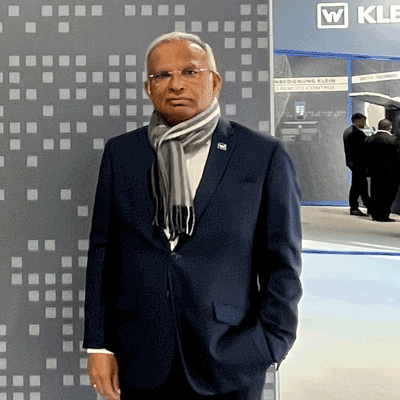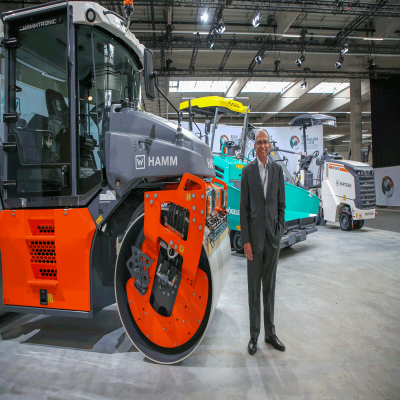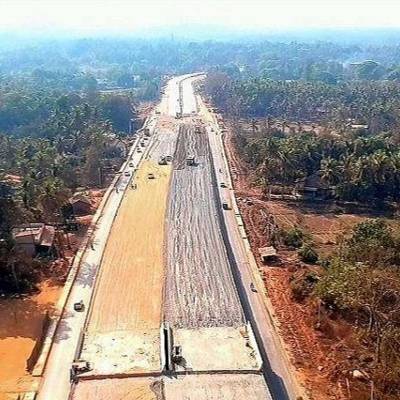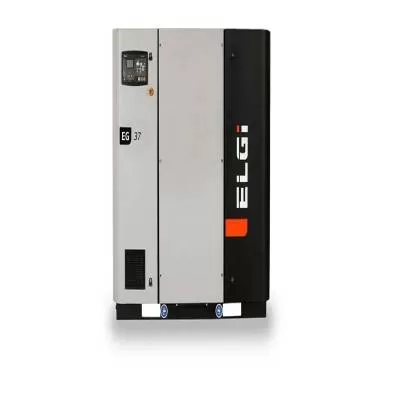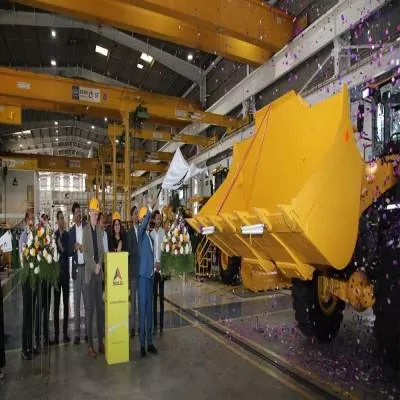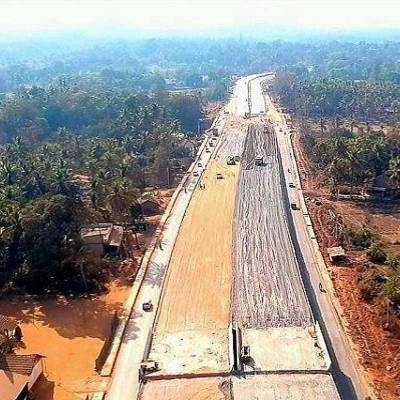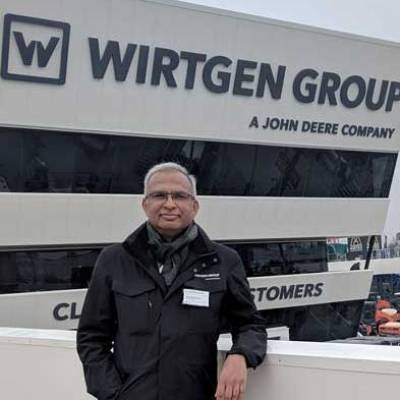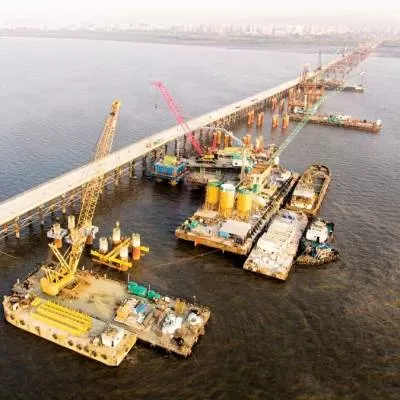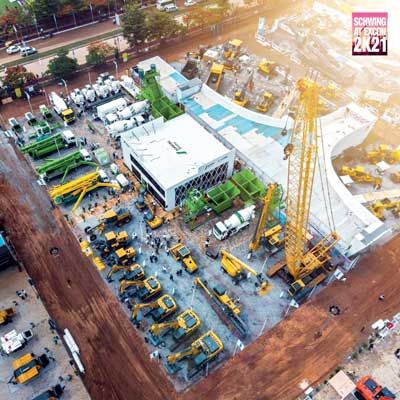In Sync with the World
Read full article
CW Gold Benefits
- Weekly Industry Updates
- Industry Feature Stories
- Premium Newsletter Access
- Building Material Prices (weekly) + trends/analysis
- Best Stories from our sister publications - Indian Cement Review, Equipment India, Infrastructure Today
- Sector focused Research Reports
- Sector Wise Updates (infrastructure, cement, equipment & construction) + trend analysis
- Exclusive text & video interviews
- Digital Delivery
- Financial Data for publically listed companies + Analysis
- Preconceptual Projects in the pipeline PAN India
- Ramesh Palagiri
- Wirtgen India
- National Infrastructure Pipeline
- Sagarmala
- Bharatmala
- Pradhan Mantri Gram Sadak Yojna
- earthmoving equipment
- construction industry
- Manish Arora
- Mahindra Construction Equipment
- LiuGong India
- Nischal Mehrotra
- Excavators
- Backhoes
- Mahindra EarthMaster backhoe loader
- motor graders
- ICEEMA
- DBM
- WMM
- Eagle Eye Telematics System
- Manish Arora
- Puneet Vidyarthi
- CASE India
- RoadMaster G90
- NBFC
Between 2014 and 2018, the market for construction equipment increased from 50,000 units to 100,000 units. But in the past year, the dip has been 20-25 per cent in 2019 across all categories, according to Ramesh Palagiri, Managing Director and CEO, Wirtgen India.The question everyone is asking is: When will the market revive?“In the last one month, we have seen a lot of momentum in the award of road projects,” says Palagiri. “The government has announced the National Infrastructure Pipeline, which will involve pumping Rs1,000 billion in infrastructure, of which about 20 per cent is expected to come to roads. We expect a slow revival after the monsoon.”Where will demand be the strongest?Reports suggest that demand has especially increased in states bound for elections in the coming two years.“The trend in India is for the ruling party at the Centre to declare a lot of projects if they want a hold on a particular state,” observes Palagiri. He cites the example of the past five years, when most of the work has been in North India, essentially in Madhya Pradesh, but now Karnataka has a new government that is rolling out many new projects.“Sagarmala, Bharatmala, Pradhan Mantri Gram Sadak Yojna and the trilateral India-Myanmar-Thailand Highway are a few prestigious projects where our machines are currently deployed,” says Puneet Vidyarthi, Brand Leader, CASE India. Going forward, he expects roads and highways, bridges, transport and mining to drive demand for construction equipment.Now, let’s undertake a comparison of the Indian and global earthmoving equipment markets. Globally, the construction industry accounts for over 60 per cent of the earthmoving equipment market. Manish Arora, Business Head, Mahindra Construction Equipment, believes India has a similar distribution. That said, “there is an abnormally high volume of backhoe loaders in India, which is something that differentiates the Indian market from the rest of the world”.Palagiri estimates that, in India, the construction sector takes up 65-70 per cent of the earthmoving equipment industry and it comprises just three products: Excavators, backhoe loaders and wheel loaders. Together, these products make up about 70 per cent of the equipment sold in India.Nischal Mehrotra, Director, Sales & Marketing and Product, LiuGong India, affirms that earthmoving equipment drives the construction equipment sector in India, in particular because of large road projects awarded or in progress. He expects roads and highways to continue to drive demand.Globally, obtaining construction equipment on rent or lease is a rising trend.“In the earthmoving segment, the rental business is quite extensive,” says Palagiri. For products like excavators and backhoes, he reckons the rental business would account for over 50 per cent of the machines in operation, as against 25-30 per cent for specialised equipment such as those used for asphalt or concrete roads.However, the rental business is dominated by state-based rental companies; few companies operate on an all-India basis, he adds. “India lacks big, organised rental companies as seen in the US or Europe.” One of the reasons for this was the taxation structure but with GST, he expects this to change.The entry of organised players in the equipment rental sector should give it a boost, observes Mehrotra.Arora believes equipment rental will play a big role in future in India. This is why Mahindra launched Mahindra Construction Equipment Rental Services, which offers two popular types of equipment – the Mahindra EarthMaster backhoe loader as well as RoadMaster series motor graders – on rent. “Renting directly from the vendor instead of a local equipment owner ensures getting reliable equipment on rent,” he says. “We also follow safety-related norms.”Turning to leasing, “more customers including a lot of listed companies prefer leasing arrangements because they want to stay asset-light,” observes Palagiri. “Consequently, today many financing companies are offering leasing options.”Globally, there is a growing trend towards the deployment of used heavy machinery. “This trend has existed in India for some time now, especially in the backhoe segment,” says Arora. “However, demand for used equipment has not hampered the growth of the segment yet, nor do we believe that used machinery will pose a threat to new launches, especially as we are focusing on disruptive and category-creating products for developing India, which you can’t find in the second-hand market yet. Mahindra has recently launched the VX+ variant of our EarthMaster and the comfort+ variant of the RoadMaster G90.”Used equipment is popular in India, too, agrees Mehrotra, even though ICEEMA has been pushing hard to stop the import of used equipment to India. He advocates new equipment because it comes with a warranty.Globally, users are opting for multifunction equipment over single-function equipment for cost-saving.Arora believes this preference was prevalent in India prior to the rise of the global trend, and is reflected in the popularity of the backhoe. That said, he cautions that multifunction equipment is a two-edged blade. “What you might gain in functionality, you are liable to lose in productivity in a particular task, so it is important to have that balance.”Users definitely prefer multifunctional equipment, if they buy a paver they would like a product that can be used not just for the BC and the DBM but also the WMM layers, says Palagiri.In fact, Vidyarthi believes “multifunction equipment is becoming more widely available as customers seek efficient, time-saving machines.” CASE India’s backhoe loaders and compactors are multipurpose machines. The backhoe loader, for instance, may be used for digging, dosing and levelling as well as lifting activities.Globally, real-time monitoring features for identifying and supervising system failure are expected to drive demand for excavators. This is relevant for India as well, according to Arora. He expects monitoring and supervising features to play a big role in future. Hence, Mahindra has focused on developing DigiSense in its machines, for monitoring and supervision on location.CASE India has recently introduced a technologically loaded, easy-to-control excavator, equipped with the Eagle Eye Telematics System, a real-time vehicle tracking and communication system based on GPS technology. This system sends the machine location and other parameters automatically to the person controlling the machine. Vidyarthi expects excavators to drive demand in a major way in future, for being suitable for multiple purposes, and that is why manufacturers focus on introducing the most technologically advanced excavators. “The demand for real-time monitoring is not just restricted to excavators but also drives demand for other construction equipment,” says Mehrotra, adding that India is seeing growing demand for excavators. LiuGong India recently launched two new variants of excavators: The CLG 923E and the CLG 926E.Telematics will become increasingly popular for better monitoring and supervision of machines, opines Palagiri. With telematics, P&M heads can get service alerts; they get to know the location of their machine, whether it is moving or stationary, etc. “By October 2020, we are all moving to BS IV, and we will definitely introduce telematics as a standard feature in all our BS IV machines because customers are demanding this for remote monitoring of their machines.”Thumbs up to more technology in earthmoving!Expect demand for high-capacity earthmoving machines to growInterestingly, one development in India is likely to spur the use of higher capacity machines, which is the outcome of the dramatic increase in land prices in recent years, according to Ramesh Palagiri, Managing Director and CEO, Wirtgen India. Palagiri explains in detail: “NHAI has actually had to drop some projects in recent years because exorbitant land prices have pushed up land acquisition costs, rendering the projects unviable. As a result, the concept of greenfield roads and expressways has emerged, like the Bharatmala project, of eight-lane perpetual (longevity of 50 years) highways passing through greenfield, unpopulated areas. These projects are larger in scale and the highways will have bigger embankments; hence, all the machines deployed for these projects, such as motor graders, excavators, etc, will be of higher capacity.”Growing role for mini excavatorsChina constructed Huoshenshan Hospital, a 1,000-bed facility, in the outskirts of Wuhan city, in just about 10 days. Teams of some 7,000 workers worked around the clock to complete the hospital to house Coronavirus patients transferred from other facilities.Three 6 tonne-rated SDLG E660FL mini-excavators were on standby 24/7 and were used in areas inaccessible to larger machines to clear debris and provide general construction support, according to SDLG. Powered by a 38.3-kw engine, the mini-excavators have a bucket capacity of 0.22 cu m.Mini-excavators are gaining popularity in India as well, “because they are ideal for constrained working environments increasingly found in urban spaces, and are more economical to own and operate and can replace the backhoe loader in certain circumstances”, opines Manish Arora, Business Head, Mahindra Construction Equipment. “Rural users are also starting to gravitate towards mini-excavators for farming, an area traditionally occupied by backhoe loaders.”Mini-excavators are gaining popularity for being compact and highly manoeuvrable, thereby providing agility, better onsite access and causing less damage onsite, says Puneet Vidyarthi, Brand Leader, CASE India. Additionally, they are trainee-friendly, multifunctional and highly productive. He expects mini-excavators to continue to make gains alongside full-on excavators.An app to simulate how a potential machine will perform on siteSite simulation software is supposed to be a critical tool in controlling the TCO (total cost of ownership) equation and help select the most efficient machine. Mahindra is working on an app built on similar lines, shares Manish Arora, Business Head, Mahindra Construction Equipment. “For our RoadMaster G90, the customers can see the various specifications and limitations of the machine that will help them choose the most optimal machine for their working environment. Full-fledged site simulation software is still some way away, especially for small-scale projects and contractors.”Equipment finance lags behind the need; vendors look for solutionsFunding is still a big issue. A lot of NBFCs are not in great shape after the IL&FS collapse. “We are trying to leverage John Deere Finance (Wirtgen is now a part of John Deere) for the sake of our customers,” says Ramesh Palagiri, Managing Director and CEO, Wirtgen India.Puneet Vidyarthi, Brand Leader, CASE India, believes the equipment finance segment in India is at a nascent stage; it has yet to penetrate the sector and perform adequately. CNHi Global’s financial arm goes by the name CNHi Capital and offers wholesale and retail equipment financing for outright acquisitions as well as rentals. “Equipment finance helps grow the rental business, which, in turn, helps customers cut down on equipment acquisition costs, and thus, eases their cash flow, protects them against business cycle fluctuations, and eliminates storage and transportation issues,” he says.


